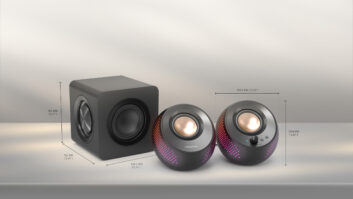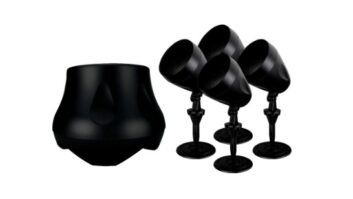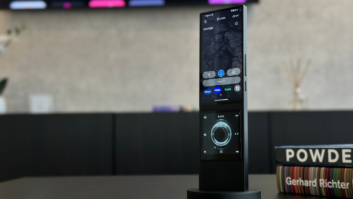New York — Motorola introduced its new flagship Moto X smartphone to the press today, and Motorola Mobility CEO Dennis Woodside called the event “a relaunching of Motorola itself.”
The Moto X is the company’s first flagship phone brought to market since the company was purchased by Google last year and incorporates many of Google’s services, such as Google Now for voice command and a free extra 50GB of Cloud storage on Google Drive, above the standard 15GB offered with other Android devices.
The phone will become available in late August or early September exclusively through AT&T carrier stores at launch, followed by Verizon Wireless, Sprint and U.S. Cellular stores. It will also be available through T-Mobile and Motorola’s website as well as national retailers, including Best Buy. It carries an initial suggested retail of $199 for a 16GB model and $249 for a 32GB with two-year contract.
The Moto X is driven by Google’s X8 chipset designed around Qualcomm’s Snapdragon S4 Pro processor and two Motorola-designed chips: a contextual computing engine that drives the phone’s sensors and physical controls, and a natural language processor for voice command. It will run the Android 4.2.2 OS and has 2GB of RAM.
Product management senior VP Rick Osterloh demonstrated the phone’s Touchless Control capabilities, highlighting a “hands-free, eyes-free” usage philosophy. The phone responds to the owner’s voice commands even when locked or in sleep mode. A voice command of “OK, Google Now” activates the phone and a subsequent voice command is carried out or a question is answered verbally.
An initial training setup teaches the phone to only respond to the user’s voice. The phone can also be paired with a trusted Bluetooth device, such as a headset or a car’s media/navigation system, allowing instant use of user-designated functions without entering a password.
The Moto X incorporates three microphones with CrystalTalk active noise cancellation, and during the demonstration it responded to voice commands from as far as 15 feet away, even with a moderate level of ambient noise in the room.
Osterloh also demonstrated the Moto X’s Active Display technology, which allows such information as time of day and message notifications to fade in and out on the phone’s 4.7-inch 720p AMOLED screen when in sleep mode without the need to physically turn on the phone. Only the needed pixels light up so the function draws very little battery power, and the pixels don’t light up at all if the phone is face down or in a pocket or bag. The Active Display info immediately appears when the phone is picked up. The type of info displayed is customizable by the user.
Power consumption was highlighted repeatedly by Osterloh, who said one of Motorola’s main objectives for the Moto X was a 24-hour battery life under “normal usage.” Besides a custom-shaped 2,200 mAh battery that allows for 31 percent more capacity without adding size to the phone’s form factor, the Moto X features custom-designed hardware architecture that shifts many background functions to low-power mode operation.
The phone also boasts dual antennas, one for standard 2G and 3G bands and the other dedicated to the 700MHz 4G LTE band, which also reduces power consumption, Osterloh said.
The phone incorporates a 10-megapixel rear-facing Quick Capture camera that can be turned on with a gesture. Two twists of a user’s wrist turns the camera on, autofocuses the lens, and sets the exposure level automatically. Touching the screen anywhere snaps a photo. Touching and holding the screen prompts a burst of rapid-fire shots. Osterloh said the Quick Capture technology allows a user to pick up the phone and take photos in less than two seconds.
The camera’s RGBC sensor has Clear Pixel technology, which adds white to the traditional RGB pixels and allows for the intake of 75 percent more light than a standard RGB Bayer sensor, yielding better low-light performance and sharper action photos, he said.
The camera also shoots 16:9 1080p video in real time or in slow motion, has an LED flash, 4x zoom, and panorama and geo-tagging modes. It adds a 2-megapixel front-facing camera that shoots stills and HD video.
The Moto X offers Motorola Assist mode to minimize interruptions when the user is doing specific tasks such as driving or sitting in a meeting.
While driving, the phone can detect when the car is in motion and can be set to Talk to Me mode, which will read incoming messages, alert to who is calling or autoreply to incoming texts.
Meeting mode can be set to sync with a user’s Google calendar, silence the phone when appropriate, and autoreply to messages. It can also be set to allow designated favorite contacts to override the meeting mode.
The Moto X also has a Wireless Display mode that will display whatever is on the screen to a Miracast-enabled TV or display.
Other features include a water-repellant coating on the exterior and on interior electrical boards, a Corning Gorilla Glass display, virtual surround sound, a Wi-Fi signal amplifier and new customizable haptic abilities.
Motorola emphasized the fashion slant of the Moto X. While the phone will roll out to retailers in basic black or white, the company is launching Moto Maker, a website that will allow consumers to customize a phone’s back, front frame and accents with more than 20 custom colors initially, and various finishes and textures to come, including an all wood-bodied Moto X. The finished phone is shipped to the buyer in four days or less.
AT&T carrier stores will be equipped with a kiosk to allow customers to design a phone in-store, pay for it there, and have it shipped to them in four or fewer days.
All Moto X phones for the U.S. market will be assembled in Fort Worth, Texas, allowing for a quick turnaround of customized phones.
Motorola said the Moto X will roll out internationally in September as well, but the Moto Maker custom models will only be available in the U.S. Phones for the international market will be assembled at the company’s various manufacturing facilities around the world.
An unlocked Google Play version of the phone will eventually reach the market, the company said.
Motorola also unveiled its M4de for Motorola accessories certification program and revealed its initial lineup of partner companies. They include Belkin, InCase, Case Mate, Griffin, Power Support, Speck, Incipio, Lifeproof and Otterbox. The company’s official M4de launch partner is SOL Republic, which displayed its new Deck Bluetooth speaker as well as headphones with finishes matching the Moto X’s color palette.













